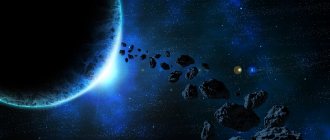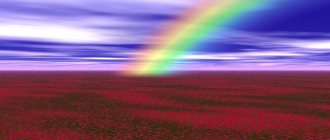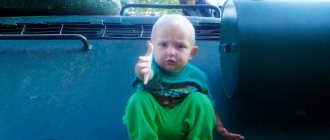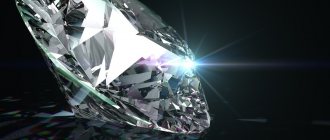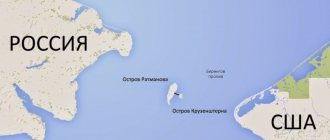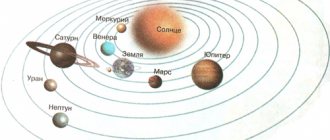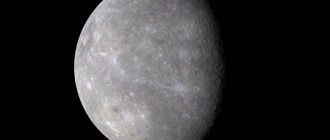Facts about the Moon:
- The oldest mountains on the Moon are considered to be its highlands. Their age exceeds 4 billion years! These hills are densely dotted with meteorite craters - so dense that you can barely find a piece of surface free from them. New impact craters are stacked on top of each other, erasing the boundaries of old craters.
- All the irregularities on the satellite, from huge depressions to the smallest craters, are the consequences of collisions with asteroids and space debris. They fall on the Moon as often as on Earth. But our satellite is not protected by an atmosphere in which most meteorites simply burn up - and when only 128 craters were found on Earth, on the Moon their number exceeded 15 thousand.
- The lunar "seas" are actually ancient plains of solidified lava. They were formed at the sites where the largest asteroids fell. Their mass generated explosions that were hundreds of times more powerful than the most powerful nuclear bomb. The impact craters were so large and deep that lava seeped to the surface and spread out into a lake.
- There are no rocks, large boulders or pronounced rocks on the Moon, like on Earth. Being exposed to the destructive influence of the Sun and outer space for billions of years, they dissipated into rock powder - the famous lunar dust that covers the entire satellite.
- Despite these destructive processes, the appearance of our satellite is changing very slowly. Dinosaurs who lived millions of years ago saw the Moon in the sky the same way we see it now. While the continents on the planet were transforming, taking on their current shapes, the surface of our satellite remained almost unchanged.
- The youngest formations on the Moon are craters with light rays. There are no visible traces of water on the surface of our planet’s satellite. Even the winding channels on the Moon, similar to river beds, were formed from volcanic lava flows.
MAGAZINE Preschooler.RF
Summary of the open lesson “TRIP TO THE MOON”(preparatory group)
Prepared by: teacher of the highest qualification category Mironova E.N. Dolgoprudny 2015
Educational objectives:
- clarify and systematize children’s knowledge about the solar system (the sun is the closest star; there are nine planets around; the path of the planet is the orbit, some information about the planets)
- deepen knowledge about the planet’s satellites (artificial and natural)
- bring to the conclusion that the Moon revolves around the Earth; why the Moon doesn't fall to Earth; How craters form on the surface of the Moon.
- give children an idea of the phases of the moon, and teach them to identify the waxing and waning moon.
Developmental tasks:
- develop and activate children’s speech, develop interest in space; children's observation and curiosity.
Educational tasks:
- foster respect for your planet
- cultivate a sense of pride in one’s homeland (the first cosmonaut was Russian)
Demonstration material: presentation
Equipment: ball on a rope, tray with sand, large stones, table lamp, globe, small ball on a stand.
Preliminary work: conversations with children about space, reading fiction, looking at illustrations, playing games.
Progress of the lesson:
The teacher reads a poem:
Yuri Gagarin
In a space rocket called “Vostok”, he was the first on the planet to rise to the stars.
Spring Drops sings songs about this: Gagarin and April will be together forever.
Author: V. Stepanov
Vostok spacecraft
— Why does the name of Yuri Gagarin sound more often in the month of April?
(because April 12 is Cosmonautics Day)
— Why is April 12 considered to be Cosmonautics Day?
(children tell everything they know about the first manned flight into space)
Slide No. 4 “Picture with space”
— That’s right, thanks to this flight, the road to space was opened for people. That is, it became possible to find out more accurate and interesting information about the planets, stars, solar system, satellites, etc., about things related to space.
“This morning a letter arrived at our kindergarten. Let's read it:
“Hello children, would you like to go on a space journey? But in order to go on a flight, you need to know something about space objects. Each window contains a hidden answer, if you guess the riddle correctly, the window will open and you will be able to reach the last window and find out which space object you will go to.”
— Many of you have encyclopedias about space, we talked a lot about space in class, sang songs about it, and drew. You already know a lot.
I think this knowledge will help you solve space-themed riddles.
Slides No. 5, No. 6, No. 7 (open the windows on each slide in turn)
Puzzles:
Earth
There are miracles on the planet: Oceans and forests, Oxygen is in the atmosphere, People and animals breathe it.
Saturn
All planets have poles, each one has an equator. But you won’t find another planet with belts.
In these rings he is alone, a very important gentleman
Jupiter
Take a quick look through the telescope. He is walking in orbit. There he is the boss over everyone, More than all other planets.
There is no one larger in our solar system.
Mars
This is the red planet Next door to us. In winter and even in summer it freezes above the ice.
It’s strange, whatever you say, the ice is not on top, but inside.
Sun
This yellow star always warms us, illuminates all planets, protects us from other stars.
Pluto
All the planets run around the Sun, And each planet has its own path. A distant tiny planet does not have the status of a “Big” planet.
And offended, she is not visible through telescopes
Moon
It either loses weight or gets fatter, It shines from the sky, but does not warm, And it always looks at the Earth with only one side.
- What is the moon? (Earth satellite)
— Is the Moon a natural or artificial satellite of the Earth? (children's versions)
The teacher explains: artificial satellites are made and launched by humans, while natural satellites are created by nature.
- So we found out what space object we will go to - to the Moon.
To the music, children make movements simulating flight in zero gravity, then sit on chairs
Slide No. 8 (Earth and Moon))
— How do you understand the meaning of the word satellite? (children's versions)
The teacher explains: a companion is someone who makes a journey with someone.
- In our case, the Moon and Earth travel together.
-Which path are they taking together? (around the sun)
— The Moon is the celestial body closest to Earth. Why doesn't the Moon fall on our planet? (children's versions)
— I propose to conduct a simple experiment.
Description of the experience.
Tie a rope to a tennis ball and start spinning it. The ball on the rope will literally pull out of your hand, but the rope will not let it go. Now stop the rotation. The ball will immediately fall.
— When did the ball fall? (when they stopped promoting it)
— That’s right, that is, when he became motionless, the Earth pulled him in, since it has an attractive force.
The teacher concludes: And the Moon would instantly fall to the Earth if it were motionless. But the Moon does not stand still, it revolves around the Earth.
Slide No. 9 (close-up of the lunar surface)
Pay attention to craters, depressions, mountains, uneven surfaces.
— The surface of the Moon is very uneven, dotted with countless craters.
— Craters are large depressions on the surface of the Moon that were formed as a result of falling meteorites. The moon, like all celestial bodies, has an attractive force, but does not have an air shell that protects from meteorites, because meteorites burn up in it.
— I propose to conduct a simple experiment.
Description of the “Make a crater” experiment.
Fill the tray with sand. Give children the opportunity to throw a large stone at him from a height. Carefully remove the stone to see the resulting crater.
Physical school
Slide No. 10 “Movement of the Moon in the sky”
— Even in ancient times, people noticed how the moon changes its shape all the time. Sometimes it is round, like a plate, sometimes it looks like a loaf of bread, sometimes only a thin sickle is visible, which people called the month. People could not explain this and composed fairy tales, riddles, myths
Slide No. 11 “Moon phases”
- If you observe the Moon for at least a few days, you will find that it is not always visible to us as a circle. The full disk of the Moon first begins to shrink until it is no longer visible at all. Then the Moon begins to grow until it becomes a full disk again.
— Do you think the moon is glowing? (children's versions)
— The moon itself does not glow, it reflects the sunlight falling on it. We also know that the moon revolves around the earth.
“I propose to conduct a simple observation.”
Description of the experiments “Movement of the Moon around the Earth”
The teacher puts on the table a table lamp that will replace the sun, a model of the Earth - a globe, a ball on a stand that will replace the moon.
We begin to slowly rotate the Moon (ball) around the Earth (globe), stopping where the phases of the Moon are clearly defined: full moon, half moon, waning and ascending moon.
-What did you notice? (the moon is illuminated differently)
- What does this depend on? (from where the Moon is)
Slide No. 12 “Scheme of the growing and aging Moon”
— How to distinguish a waxing Moon from a waning Moon? Very simple! If a month looks like the letter “C” , then it is Aging. And if it is turned in the opposite direction, then, mentally placing a stick on it on the left, we will get the letter “P”, which will tell us that the month is now Growing.
— Now try to determine whether the moon is growing or aging.
Slide No. 13, 14, 15, 16 with different phases of the moon.
Summarize the lesson. (sample questions)
- Which satellite of our planet did we visit today? (The Moon is a natural satellite)
— Why doesn’t the Moon fall to Earth? (because it always revolves around her)
— Why are there large depressions on the surface of the Moon? (because meteorites are falling)
— Why is the Moon always different in the sky? (because the sun shines on it from different directions)
— How to distinguish a waxing Moon from a waning Moon?
“It’s time for us to return to our planet.”
To the music, children make movements simulating flight in zero gravity. then sit down on the chairs
| Next > |
Questions and answers:
Why does the moon glow? — Its surface does not glow on its own; it reflects the sun’s rays like a mirror.
Why is the unlit part of the Moon sometimes faintly visible? “At such moments, it is illuminated by the Sun, the light of which is reflected by the Earth itself. This phenomenon is also called the “ash light” of the Moon.
Ash Moonlight
Which side of the Moon is considered dark? — The one that is not illuminated by the Sun at the time of observation.
Are there volcanoes on the Moon? - Yes, only a few pieces. But they are either too low to stand out seriously, or too small to be considered more important than ordinary hills.
Why are there so many craters on the Moon? — Collisions with asteroids, comets and other cosmic bodies leave deep craters, like after explosions. They are called craters. The Moon has neither an atmosphere to protect it from meteorites, nor water or wind that could smooth out collision sites. Therefore, it is not strange that over the 4 billion years of the Moon’s life, so many craters have accumulated on it.
Placer craters on the Moon
Is there lava on the moon? — There is no fresh, hot and red lava on the surface of the Moon. But there is a cooled one - for example, in the lunar seas.
Why are there so many different faces in the craters on the map? — Inside some craters there are depicted the faces of those famous people whose names they bear. Others are simply drawn
Others are simply drawn
Apollo 17 on the Moon
What do the red icons with numbers mean on the map? — They show the landing sites of spaceships on the Moon. The numbers abbreviate the names - the decryption key is located in the lower right part of the card.
What do the multi-colored dots mean? “They point to the places where space probes landed on the Moon (or where they crashed).
What do the rings on the moon mean? “They mark the rims of the craters.
Where do the light and dark spots on the Moon come from? “The dark zones of our satellite are “young” areas covered with solidified lava. Their age ranges around 3 billion years. The lighter areas are older - these are the crater-strewn highlands that were mentioned at the beginning. Their age is 4 billion years.
Why is the Moon gray? - In fact, the surface of the Moon is black as coal. It is caused by the strong light of the Sun to glow bright gray.
Footprint of Neil Armstrong, the first man to walk on the moon in 1969.
Have there been people on the moon? “So far, it remains the only cosmic body outside the Earth on which man has set foot. In total, 12 astronauts visited there - all Americans. 11 of them were jet fighter pilots trained for space flights. Another astronaut was a geologist. The remaining astronauts work either in lunar orbit or in near-Earth space, and have not yet been to extraterrestrial worlds.
Where did she come from and how old is she?
One may get the impression that the Moon has always been there. But she had to appear someday! Astronomers were able to find out its approximate age. To do this, they examined the soil brought by the astronauts. And they found out that the earth’s satellite is about 4 and a half billion years old. Quite an old lady.
Where did she come from? Scientists, of course, are trying to find out the answer to this question. And there are many versions about the origin of our planet’s satellite. Let's get to know some of them.
There is a theory that a long time ago the Earth collided in space with another celestial body the same size as the planet Mars, that is, very large. As a result of this impact, a large piece was torn off from the Earth, which later became its space satellite.
Some scientists believe that our planet and its satellite were formed in different places in the solar system. But then the Moon flew past the earth in space and was captured by the gravitational field. In other words, the Earth pulled it towards itself and still holds it in its orbit.
Another option similar to the previous one. The Earth attracted several small moons to itself. As a result, these celestial bodies collided, broke into fragments, and then from these fragments the moon that we know now appeared.
Moon - explanation for children
The Moon is a natural satellite of the Earth : description for children with photos: interesting facts, characteristics, orbit, map of the Moon, USSR research, Apollo, Neil Armstrong.
or teachers at school start explaining to children by saying that the earth’s satellite is incredibly easy to detect. The Earth has a single Moon that accompanies us almost every night. Lunar phases have controlled humanity for thousands of years, forcing them to adapt (a calendar month is approximately equal to the time it takes for the Moon to change phases).
The phases of the Moon and its orbit remain a mystery to many. You can explain to children that the Moon always shows one face to our planet. The fact is that for an axial rotation and around the planet it takes 27.3 days. We notice the full moon, crescent moon and new moon because the satellite reflects sunlight. The level of illumination depends on the location of the satellite in relation to us and the star.
The moon has a powerful influence on us and may even be the reason for the emergence of life.
The Moon is a natural satellite of the Earth, but it is larger than Pluto (diameter - 3475 km) and occupies 27% of the Earth's size (ratio of approximately 1:4). This is a much smaller ratio than the situation with other moons and their planets.
Or maybe build a lunar house?
Living on the moon will be difficult. Yes, of course there are seas and mountains, just like on our home planet. But only in the lunar seas there is no water. These are huge craters left from falling meteorites. There are 17 seas in total. They are also called lunar craters. These are depressions of different sizes from small to huge. We can see one of these craters, called the Eastern Sea, on the lunar disk at night.
The lunar seas have very beautiful names. For example, Sea of Tranquility, Sea of Rains, Sea of Clouds. There is also one ocean, it is called the Ocean of Storms.
The surface of the moon is brownish-gray in color and covered with dust. This dust is very fine, similar to flour, but at the same time very coarse. It can get into the smallest cracks. The astronauts who managed to visit the surface of the satellite complained that it ruined their shoes and got into their spacesuits. And the dust smells like something burnt.
The gravity on our satellite is six times less than that of Earth, so moving on its surface is very difficult. You have to move very slowly.
During the day it is very hot, the temperature reaches +130 degrees. And at night it’s “cool” down to -180. Well, who else wants to build a house on the moon?
Moon Exploration - Explained for Kids
Ancient people believed that the satellite was a fiery bowl or mirror reflecting the earth's seas and surface. But philosophers knew that this was a sphere revolving around the Earth, and moonlight was just a reflection of the sun. The Greeks thought that the dark regions were the seas and the bright regions the land.
Galileo Galilei was the first to apply telescopic observation to a satellite. In 1609 he described it as a rough mountain surface. And this was at odds with the usual opinion about the smooth Moon.
A NASA astronaut on the Apollo 17 mission moves on a rover on the surface of the Moon.
The USSR sent the first spacecraft in 1959. He was supposed to explore the lunar surface and send back photographs of the far side. The first astronauts landed in 1969. This is one of NASA's most remarkable achievements. Afterwards they sent 5 more successful missions (and one Apollo 13 that did not reach the satellite). With their help, 382 kg of rock was delivered to Earth for study.
Then came a long pause, which was broken in the 1990s by the US robotic missions Clementine and Lunar Geologist, who were looking for water at the lunar poles. In 2011, the Lunar Reconnaissance Orbiter (LRO) created the best map of the satellite. In 2013, China made its mark in lunar history by anchoring a rover to the surface.
But it’s not just government missions that explore the Moon. In 2014, the first private mission approached the satellite. And here some disagreements arise, because there is no agreement on how the satellite can be used, and who owns the breed.
Children will love learning about the Moon as it is the closest object to Earth. You can observe it in photos, pictures, drawings and diagrams provided by telescopes and spacecraft. In addition, the site contains a description of the Apollo mission and the story of the first man on the moon - Neil Armstrong. Use the Moon map to explore mission landing sites, as well as the location of major craters and seas. To diversify the learning process for children and schoolchildren of any grade, use a 3D model of the solar system or use an online telescope and watch the Moon in real time for free.
Source
Make a model of the Moon from plasticine, correctly showing its shape.
Take a piece of gray plasticine and roll it into a ball.
This will be the correct shape, because it is a ball. It just seems to us that it is changing its shape.
Using pictures from the textbook, tell how the Moon is studied.
Scientists have long begun to study the Moon.
In ancient times, they simply looked at our satellite and tried to understand why it looked different all the time.
Then the telescope was invented, and scientists began to study the lunar surface through its lenses and eyepieces.
Then they discovered craters, seas and mountains on it.
In the mid-20th century, people were able to land their spacecraft on the lunar surface. They were called lunar rovers and explored the surface of our satellite, taking soil samples.
And then astronauts landed on it several times and also conducted research.
Space travelers
Did man manage to visit the moon? Of course we succeeded. In total, 12 people got the opportunity to walk on the surface of the earth’s satellite. They were all American astronauts.
The first was the American Neil Armstrong. This happened on July 21, 1969. He stayed on the surface for 21 hours and 36 minutes.
Well, astronauts Eugene Cernan and Harrison Schmitt spent the longest time on the moon. They stayed there for 75 hours and 1 minute. This happened in December 1972.
Also, not only people, but also special devices worked on our satellite. Have you heard about Lunokhod?
This is a Soviet spacecraft that landed on the surface of the moon on September 17, 1970. It was remote controlled from the ground. Walked on the surface for more than 10 km. With its help, scientists conducted soil studies and took photographs of the lunar surface. For 10 and a half months, the lunar rover worked properly. And on September 14, 1971, he did not get in touch.
